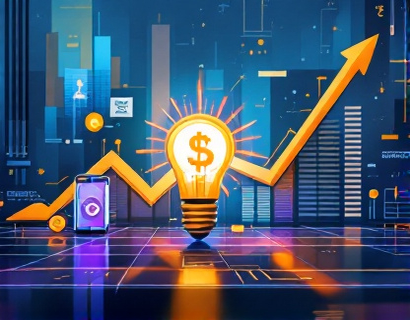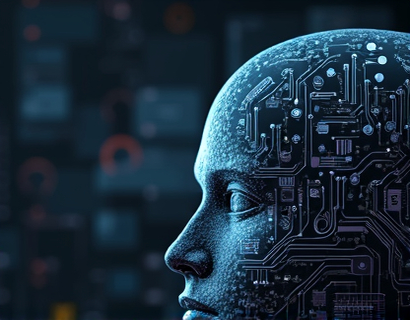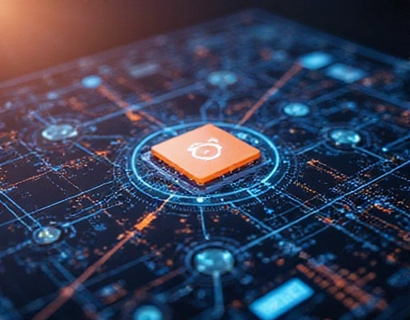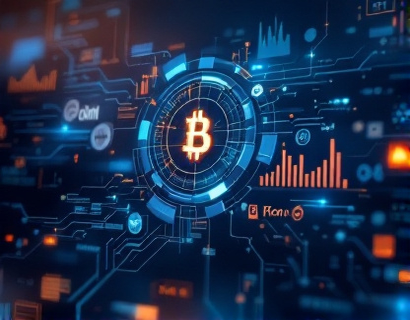Revolutionizing Digital Asset Management: The Power of Decentralized dApps for Cross-Blockchain Conversion
The landscape of blockchain technology is rapidly evolving, with new applications and innovations emerging regularly. One of the most significant challenges in this space is the interoperability between different blockchains. Digital assets created on one blockchain often cannot be directly used on another, necessitating complex and sometimes costly conversion processes. A groundbreaking decentralized application, often referred to as a dApp, is changing this paradigm by streamlining the cross-blockchain conversion of digital assets. This article delves into the intricacies of this revolutionary dApp, highlighting its capabilities, benefits, and the transformative impact it has on blockchain professionals and digital asset managers.
Understanding the Need for Cross-Blockchain Asset Conversion
The blockchain ecosystem is fragmented, with numerous platforms each having its own unique features and token standards. Ethereum, for instance, uses ERC-20 tokens, while Binance Smart Chain employs BEP-20. This fragmentation creates silos, limiting the fluid movement of digital assets across different blockchains. For blockchain professionals and digital asset managers, this means managing multiple wallets, understanding various technical requirements, and often incurring additional fees for conversion services. The need for a seamless and efficient solution to convert digital assets across blockchains is evident.
Introducing the Decentralized Solution
The introduced dApp is a decentralized platform that operates on the principles of blockchain technology itself. It leverages smart contracts and decentralized networks to facilitate the conversion of digital assets without the need for intermediaries. This approach not only reduces costs but also enhances security and transparency. The dApp is designed to be user-friendly, allowing individuals and organizations to convert their assets with minimal effort and maximum efficiency.
Key Features of the Decentralized dApp
- Cross-Blockchain Compatibility: The dApp supports a wide range of blockchains, ensuring that digital assets can be converted between virtually any pair of blockchains. This universal compatibility is a significant advantage over traditional conversion methods that are often limited to specific platforms.
- Smart Contract Integration: By utilizing smart contracts, the dApp automates the conversion process, reducing the risk of human error and ensuring a smooth transaction flow. Users can set up conversion rules and parameters directly within the smart contract, providing a high degree of customization.
- Decentralized Governance: The dApp operates on a decentralized network, meaning there is no central authority controlling the conversion process. This governance model ensures that the platform remains resilient to censorship and manipulation, maintaining the integrity of the asset conversion process.
- Real-Time Updates: The dApp continuously monitors blockchain networks for the latest updates and changes in token standards. This ensures that the conversion process is always up-to-date and compatible with the latest blockchain protocols.
How the dApp Works
The process of converting digital assets using the dApp is straightforward and can be broken down into several key steps:
1. Asset Selection: Users begin by selecting the digital assets they wish to convert. The dApp supports a wide variety of tokens and coins, ensuring broad applicability.
2. Destination Blockchain Choice: Users choose the blockchain on which they want to transfer the converted assets. The dApp's comprehensive database ensures that any valid blockchain can be selected.
3. Smart Contract Interaction: The conversion process is initiated through a smart contract. Users interact with the smart contract by providing the necessary parameters, such as the amount to convert and any specific conversion rules.
4. Conversion Execution: Once the smart contract is deployed and parameters are set, the conversion process begins. The dApp automatically handles the necessary transactions, ensuring that the assets are transferred seamlessly from the source blockchain to the destination blockchain.
5. Confirmation and Completion: After the conversion is complete, users receive a confirmation notification. They can then access their converted assets on the target blockchain, ready for use.
Throughout this process, the dApp provides real-time updates and notifications, ensuring users are always informed about the status of their conversion. The decentralized nature of the platform means that there are no single points of failure, enhancing the reliability and security of the service.
Benefits for Blockchain Professionals and Digital Asset Managers
The introduction of this decentralized dApp brings numerous benefits to blockchain professionals and digital asset managers:
Enhanced Efficiency
The automation of the conversion process significantly reduces the time and effort required to move digital assets between blockchains. This efficiency is crucial for professionals who manage large portfolios and need to perform frequent conversions. The streamlined process allows for faster execution of transactions, improving overall operational efficiency.
Cost Reduction
Traditional methods of cross-blockchain conversion often involve multiple intermediaries, each charging fees for their services. The decentralized dApp eliminates the need for these intermediaries, reducing costs associated with conversion. This cost savings can be substantial, especially for large-scale operations.
Increased Security
By leveraging blockchain technology and smart contracts, the dApp ensures that the conversion process is secure and transparent. Smart contracts are immutable and executable only when predefined conditions are met, minimizing the risk of fraud or errors. Users can trust that their assets are handled securely throughout the conversion process.
Greater Flexibility
The dApp's cross-blockchain compatibility offers unparalleled flexibility. Users are not bound to specific platforms or token standards, allowing them to take full advantage of the diverse ecosystem. This flexibility is particularly valuable for digital asset managers who need to adapt to changing market conditions and technological advancements.
Improved User Experience
The user-friendly interface and real-time updates provided by the dApp enhance the overall user experience. Users can easily manage their asset conversions without needing extensive technical knowledge. This accessibility makes the platform suitable for both novice and experienced blockchain users.
Case Studies and Real-World Applications
To better understand the impact of this decentralized dApp, let's explore a few real-world scenarios:
1. Cross-Chain Trading Platforms: Trading platforms that support multiple blockchains can integrate this dApp to allow users to seamlessly convert assets between different chains. This enhances the liquidity and usability of the platform, attracting more users and increasing trading volume.
2. DeFi Protocols: Decentralized finance (DeFi) protocols can leverage the dApp to enable users to move their assets between various DeFi platforms without the hassle of manual conversions. This interoperability is crucial for the growth and adoption of DeFi solutions.
3. Asset Management Firms: Firms managing crypto portfolios can use the dApp to efficiently convert assets for diversification strategies. The reduced costs and increased efficiency make it an attractive solution for professional asset management.
Challenges and Future Developments
While the dApp offers significant advantages, there are still challenges to address:
Scalability
As the number of users and transactions increases, ensuring the dApp can handle high volumes without performance degradation is crucial. Continuous optimization and scaling solutions, such as layer 2 protocols, will be essential to meet growing demand.
Regulatory Compliance
The decentralized nature of the dApp presents regulatory challenges. Ensuring compliance with varying international regulations while maintaining the platform's decentralized governance will require careful navigation and collaboration with legal experts.
User Adoption
Encouraging widespread adoption among blockchain professionals and digital asset managers is key to the dApp's success. Education and community engagement initiatives will play a vital role in promoting the benefits and usability of the platform.
Looking ahead, future developments may include:
- Integration with more blockchains and token standards to expand compatibility.
- Enhanced user interface and experience improvements to make the platform even more accessible.
- Development of additional features, such as real-time market data integration and advanced conversion options.
Conclusion
The decentralized dApp for cross-blockchain digital asset conversion represents a significant leap forward in blockchain technology. By addressing the long-standing issue of interoperability, it provides a seamless, efficient, and secure solution for managing digital assets. For blockchain professionals and digital asset managers, this innovation offers a powerful tool to enhance their operations and stay ahead in the rapidly evolving blockchain landscape. As the platform continues to evolve, it is poised to play an increasingly important role in the future of decentralized finance and blockchain applications.











































